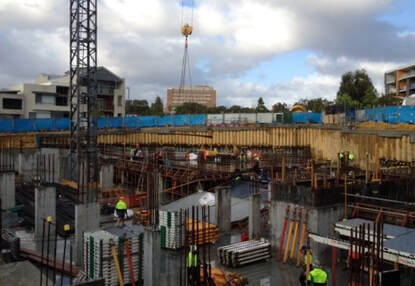Why is your construction project unprofitable?There are many reasons for construction projects to lose money, and often more than one for a particular loss. Some reasons may be:
Why clients cost contractors moneyOf course sometimes the reasons are because of the client, in which case it's important that the contractor notifies the client, claims for the delay, changes, or additional scope, and assists the client to rectify the problem. 15 Rules for construction variation claims and change orders When can contractors claim extra costs? Some reasons the client is causing the contractor extra costs may be:
Occasionally the problem is due to a mistake in the project price in which case the estimator should be told so the same mistake doesn't occur on the next tender. #constructionprojects #constructionmanagement #contractors Your Construction Project is in Trouble – Who are you Going to Blame? Information in this article is from Paul Netscher's construction management books all available on Amazon and from other online stores. © 2022 This article is not to be reproduced for commercial purposes without written permission from the author. construction management construction project management
1 Comment
Daniel Ranoko
29/5/2014 10:35:01 am
It is normally not being on top of things with regards to document and communicate changes. The other aspect is also brought by lack of resources
Reply
Leave a Reply. |
As an Amazon Associate I earn from qualifying purchases
Archives
January 2024
CategoriesCopyright 2016 - The attached articles cannot be reproduced for commercial purposes without the consent of the author.
The opinions expressed in the attached articles are those of the writer. It should be noted that projects are varied and different laws and restrictions apply which depend on the location of the contractor and the project. It's important that the reader uses the supplied information taking cognisance of their particular circumstances. The writer assumes no responsibility or liability for any loss of any kind arising from the reader using the information or advice contained herein. "I have what I consider some of the best books on construction management."
Books are available from: Amazon.com Amazon.co.uk takealot.com kalahari.com Amazon.in Amazon.de Amazon.fr Amazon.it Amazon.com.au Powell's Fishpond uread bokus Amazon.ca Amazon.es Other retail stores Available in paperback or on Kindle "28 YEARS OF CONSTRUCTION PROJECT MANAGEMENT EXPERIENCE, DEVELOPING SUCCESSFUL CONSTRUCTION PROJECT MANAGERS AND BUILDING SUCCESSFUL CONSTRUCTION COMPANIES"
|





 RSS Feed
RSS Feed